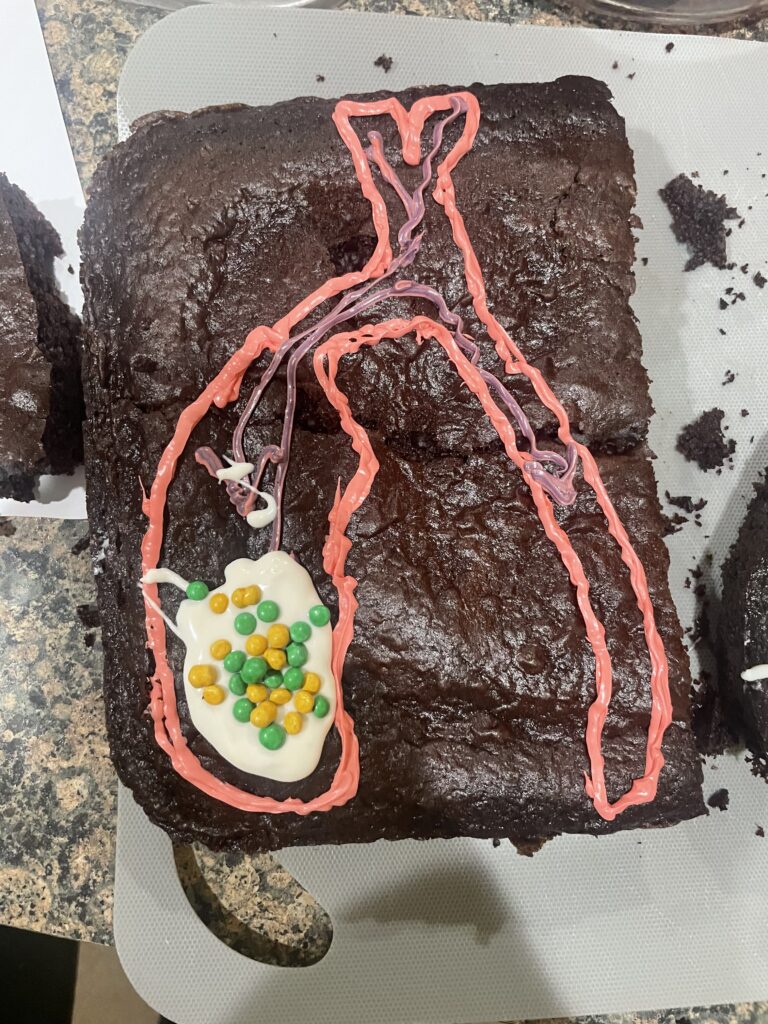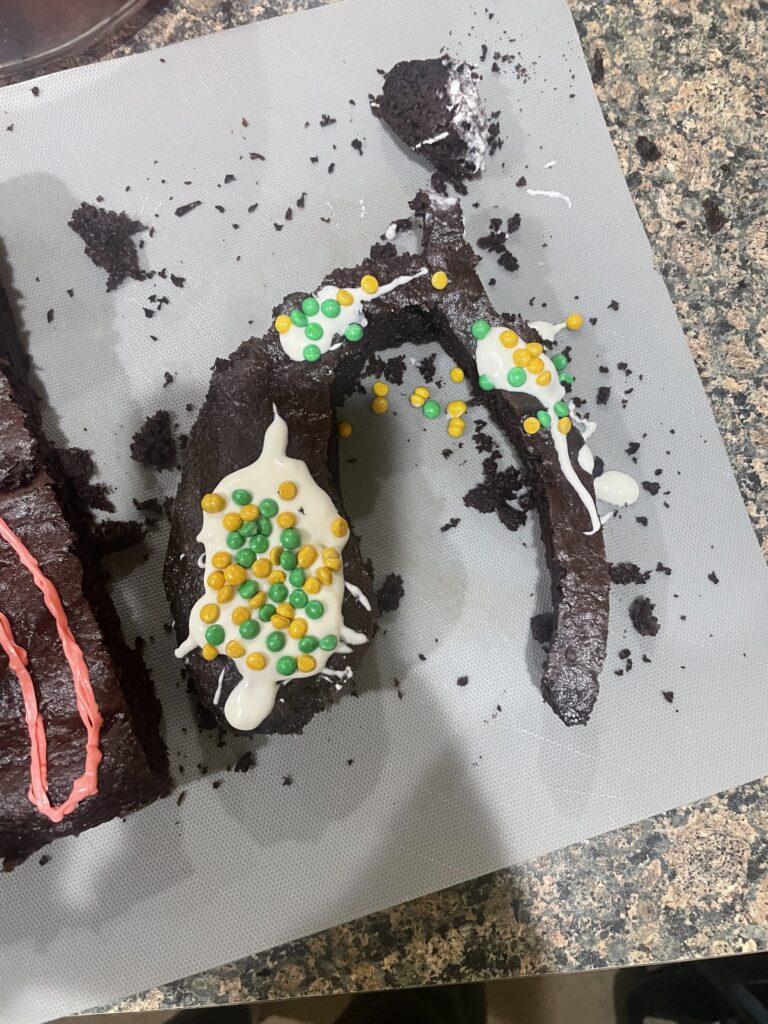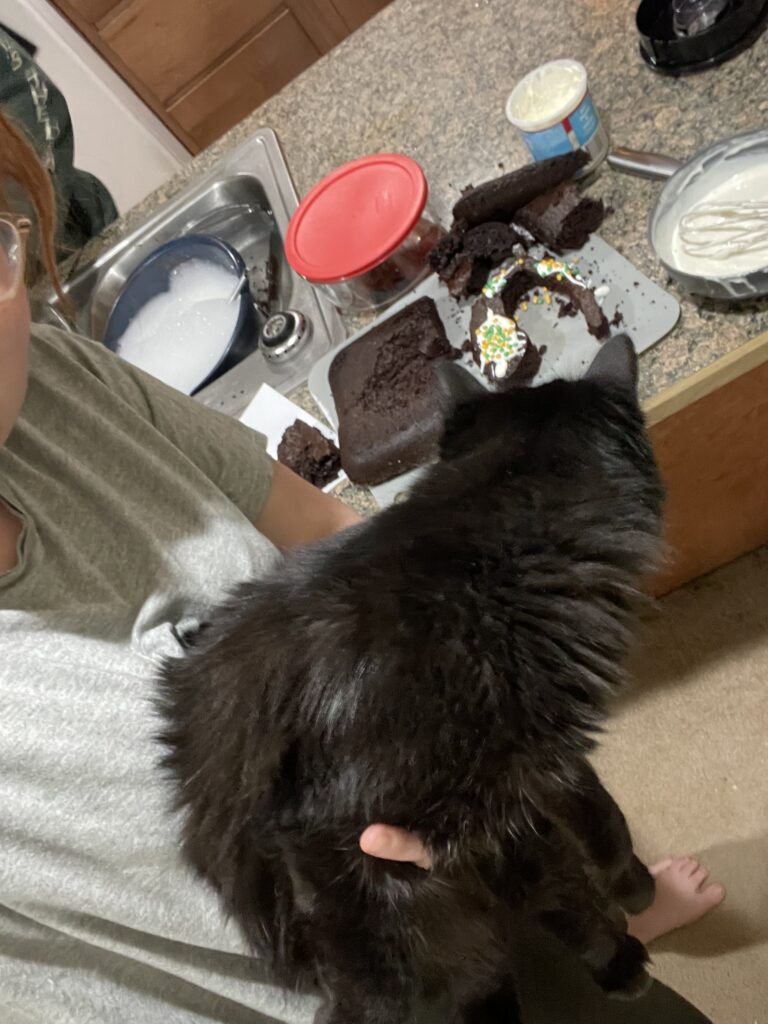
Gallstones are not often talked about but it is the fifth major digestive disease in the United States, gallstones form when bile harden. Extra bile is stored in the gallbladder to aid in digestion into the small intestine. Bile enters from the top from the common hepatic duct from the liver. The bile travels through the cystic duct into the gallbladder. The bile than leaves though the cystic duct and into the common bile duct to meet the duodenum (first part of small intestine). When stones form they get stuck in either cystic duct or the common bile duct. If the stones can not get passed than they can cause severe health issue. The sprinkles represent stones in the bile and has they are stuck in the common bile duct. Red frosting is the outline of the gallbladder and ducts, purple is the flow of bile .



I think that this project covers objective 49: State the 4 functions and 6 steps of the liver. I believe this because it thoroughly describes one function and one step of digestion.
The gallbladder is responsible for storing bile that the liver makes until food enters the small intestine. When that happens, the bile is secreted through the bile duct into the duodenum of the small intestine. Its job is to digest lipids so they can be absorbed.
Gallstones are hardened bile, and they appear quite often in the United States. They can be large enough to block the bile duct, where it will stop the bile from entering the small intestine and cause inflammation or infection. If a person is susceptible to gallstones, they may have their gallbladder surgically removed.
Nicole Miller made a cake for this project showing a gallstone stuck in the bile duct. The gallstone is represented with yellow and green sprinkles, red frosting indicates the walls of the ducts, and purple frosting shows what direction the bile is flowing.